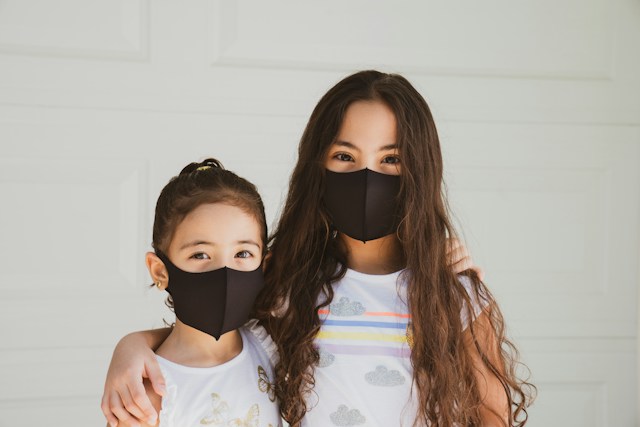A wide range of pollutants are included in the term “air pollution,” such as particulate matter, ozone, carbon monoxide, nitrogen dioxide, sulphur dioxide, and volatile organic compounds. These contaminants come from a variety of sources, including agricultural practices, automobile exhaust, industrial emissions, and natural events like wildfires. Their presence in the atmosphere causes the quality of the air to deteriorate, which is extremely dangerous for human health.

There is much evidence on the harmful impacts of air pollution on many health issues. Short-term exposure can exacerbate asthma, result in lung infections, and cause respiratory problems. Long-term exposure is linked to chronic illnesses such as lung cancer, stroke, cardiovascular disease, and even neurological abnormalities. Children, the elderly, and people with pre-existing medical disorders are among the vulnerable groups that are most vulnerable.
What Is The Impact of Air Pollution on Respiratory Health?
The lungs, airways, and related tissues of the respiratory system, the body’s main point of contact with its surroundings, experience the brunt of air pollution’s impact. The respiratory system is vulnerable to harm and several health problems when exposed to air contaminants, including:
Asthma flare-up: Air pollution aggravates asthma sufferers’ symptoms by acting as a trigger for the illness. Particulate matter, ozone, and nitrogen dioxide can irritate the airways, leading to bronchial inflammation and constriction, which can cause asthmatic patients to cough, wheeze, and experience dyspnea.
Chronic Obstructive Pulmonary Disease (COPD): Prolonged exposure to air pollutants, especially fine particulate matter and cigarette smoke, triggers the onset and drives the progression of COPD. These toxins cause long-term inflammation, constriction of the airways, and permanent damage to the lung tissue, which shows up as emphysema or chronic bronchitis.
Air pollution makes it more difficult for the immune system to combat respiratory diseases. Particulate matter and other pollutants have the ability to disrupt immune cells in the respiratory tract, increasing a person’s susceptibility to diseases including influenza, pneumonia, and bronchitis.
Lung Cancer: Specific air pollutants, like certain volatile organic compounds (VOCs) and fine particulate matter, increase the risk of developing lung cancer with extended exposure. These contaminants have the ability to enter the lungs deeply, changing lung cells genetically and perhaps resulting in the development of cancer.
Diminished Lung Function: Prolonged exposure to air pollution hinders children’s and adolescents’ lung development and reduces adults’ lung function. This decline in lung function may last a lifetime and raise the possibility of respiratory disorders in the future.

Cardiovascular Complications: The cardiovascular system is impacted by air pollution in addition to the respiratory system. Pollutants inhaled can enter the circulation and cause oxidative stress and inflammation, which can lead to heart attacks and strokes and other cardiovascular illnesses.
Signs of Exposure to Air Pollution Associated with Respiratory Health
There are several detrimental impacts that air pollution exposure can have on respiratory health. The following are some typical signs of exposure to air pollution:
Coughing: When air pollution irritates the airways, it causes coughing to worsen and frequently results in the formation of mucus or phlegm.

Breathing difficulties: Prolonged exposure to air pollution can worsen symptoms of asthma and chronic obstructive pulmonary disease (COPD), especially in people who already have respiratory disorders.
Wheezing: Breathing with a whistling or wheezing sound might be caused by air pollution constriction of the airways.
Tightness or pain in the chest: Pollution-related irritation might produce pain or tightness in the chest.
Increased risk of respiratory infections: Extended exposure to contaminated air can impair immunity, increasing the risk of respiratory illnesses including pneumonia and bronchitis.
Exacerbation of pre-existing respiratory disorders: People who have bronchitis, asthma, COPD, or other chronic respiratory illnesses may experience more frequent and severe episodes as a result of air pollution aggravating their symptoms.
Reduced lung function: Prolonged exposure to air pollution can cause a child’s lungs to grow less fully, as well as cause respiratory problems to emerge later in life.
Eye, nose, and throat irritation: Airborne pollutants can produce burning, stinging, or irritating sensations in these areas.
Fatigue and headaches: As a result of the body’s reaction to breathing in pollutants, some people who are exposed to high levels of air pollution may feel exhausted, fatigued, or have headaches.
Exacerbation of cardiovascular problems: The consequences of air pollution extend beyond respiratory disorders; they can exacerbate cardiovascular conditions including heart attacks, strokes, and other heart-related conditions.
Who Is at Risk for Air Pollution’s Health Effects?
Children are especially vulnerable to the impacts of pollution since their respiratory systems are still growing. Childhood exposure can result in long-term health problems.
Older persons: Hospitalisations and death rates may rise due to pre-existing health issues that older folks frequently have, which may be made worse by poor air quality.
People with pre-existing medical disorders are more likely to have worsening symptoms or complications from air pollution. These people may include those with diabetes, heart disease, lung diseases (such as asthma or chronic obstructive pulmonary disease, or COPD), or other chronic ailments.
Women who are pregnant: Pollution exposure can have negative effects on the growing foetus as well as the mother, increasing the risk of difficulties during pregnancy and having an influence on the child’s health in the future.
Workers outside: People whose jobs require them to work outdoors, such as construction workers, farmers, and traffic officers, face increased exposure to air pollution, leading to greater health risks.
Low-income communities: Residents living near busy highways, industrial zones, or other pollution sources experience higher exposure to pollutants compared to individuals residing in regions with cleaner air, often linked to a lower socioeconomic status.
Ways to Guard Against Bad Air Quality
Keep Up With Air Quality Levels: Monitor reports on local air quality. Real-time information on the air quality index (AQI) is available on a number of websites and applications. By being aware, you may schedule outside activities for when the air quality is higher and take the appropriate safety measures when it’s not.
minimise Outdoor Activities on Days with Poor Air Quality: On days with poor air quality, you should minimise your exposure to outdoor air pollution.
This may entail moving workouts, strolls, or other activities outside to periods of higher air quality.
Utilise Air Purifiers Indoors: Make an investment in a high-calibre air purifier for your house or place of business. By removing allergens, pollutants, and particulates from the air, air purifiers can enhance indoor air quality and lower the health risks that come with breathing in dirty air.
Wear Masks: Masks certified for particulate matter can help filter out dangerous particles when outdoor air quality is severely impaired, especially in extremely polluted places or during disasters like wildfires. Seek for masks that can efficiently filter out airborne particles, such as those having ratings of N95, N99, or N100.

Establish Clean Air Spaces: You should think about doing this throughout your house, particularly in the bedrooms. In order to prevent particles from being suspended in the air, this may include utilising humidifiers, air purifiers, and even closing windows during periods of low air quality.
In conclusion, people of all ages and backgrounds are affected by air pollution, which presents serious dangers to respiratory health. Pollutants come from a wide range of sources and negatively affect the respiratory system, causing acute symptoms, aggravating pre-existing disorders, and chronic illness development.
It is essential for early intervention and protection to identify the symptoms linked to exposure to air pollution.
You may also like:
The Best Ways To Boost Your Mental Health in 2024
Chronic Fatigue Syndrome: Taking Control of Your Energy and Life

